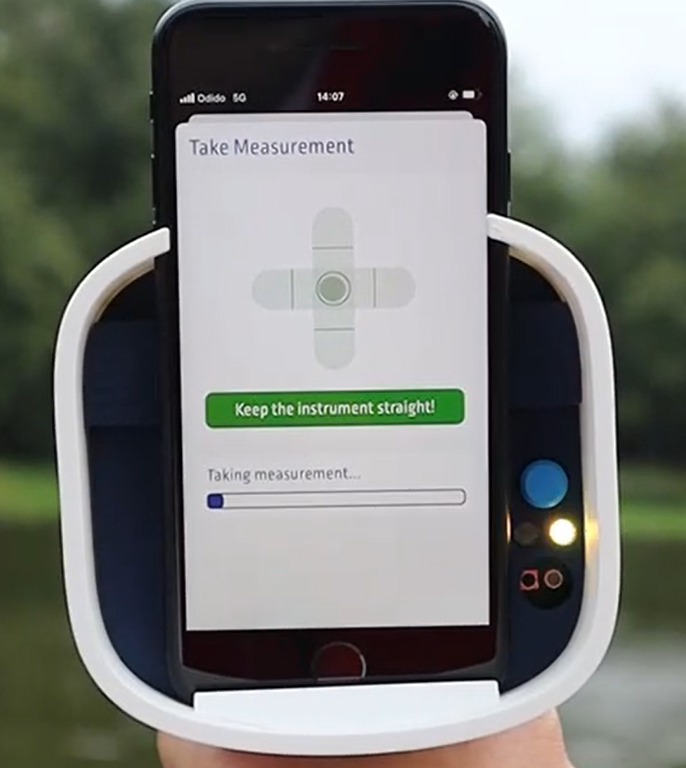Posted: September 11, 2024
Recently we introduced you to the newest member of our instrument family: the WISP Orca. It is a fast and agile instrument, designed for fast and precise optical water quality measurements (chlorophyll, cyanobacterial, turbidity,.. etc) and for calibration/validation of satellite data. Building on the robust experience of the well-known WISP-3 and WISPstations, the WISP Orca incorporates several significant improvements.
Today we will highlight two important enhancements: the tilt sensor and GPS.
Optical instruments measure the colour of the water, from which via algorithms concentrations are derived. Remote sensing science has defined optimal positions for taking optical measurements to avoid sun reflection, shadows etc. While it sounds simple, keeping the right position can be challenging in the field when dealing with shorelines, waves, or while standing on a moving ship. An important add-on of the WISP Orca is therefore the tilt sensor, which assists the user in maintaining the best position, ensuring optimal measurement conditions.
Precision in water quality measurements also requires accurate location data. The WISP Orca is equipped with its own built-in GPS, offering superior accuracy and simplifying the process by automatically linking the GPS location to each measurement.
Discover the future of water quality scanning with the WISP Orca - where innovation meets convenience.
